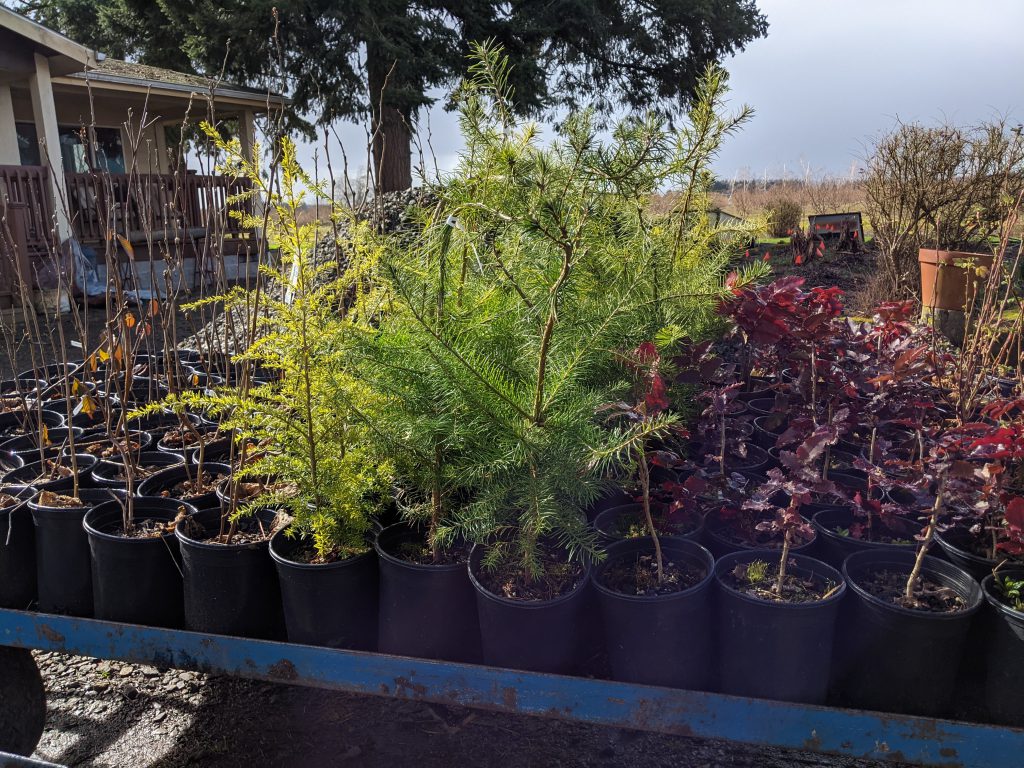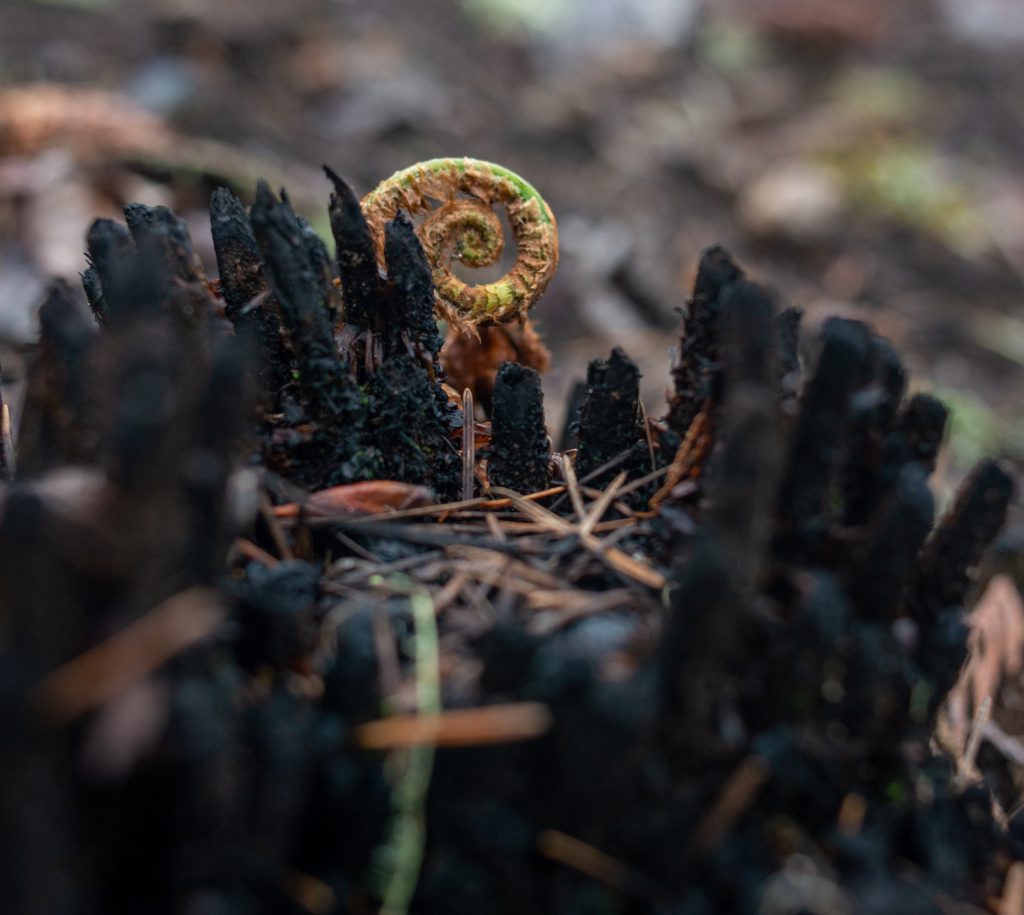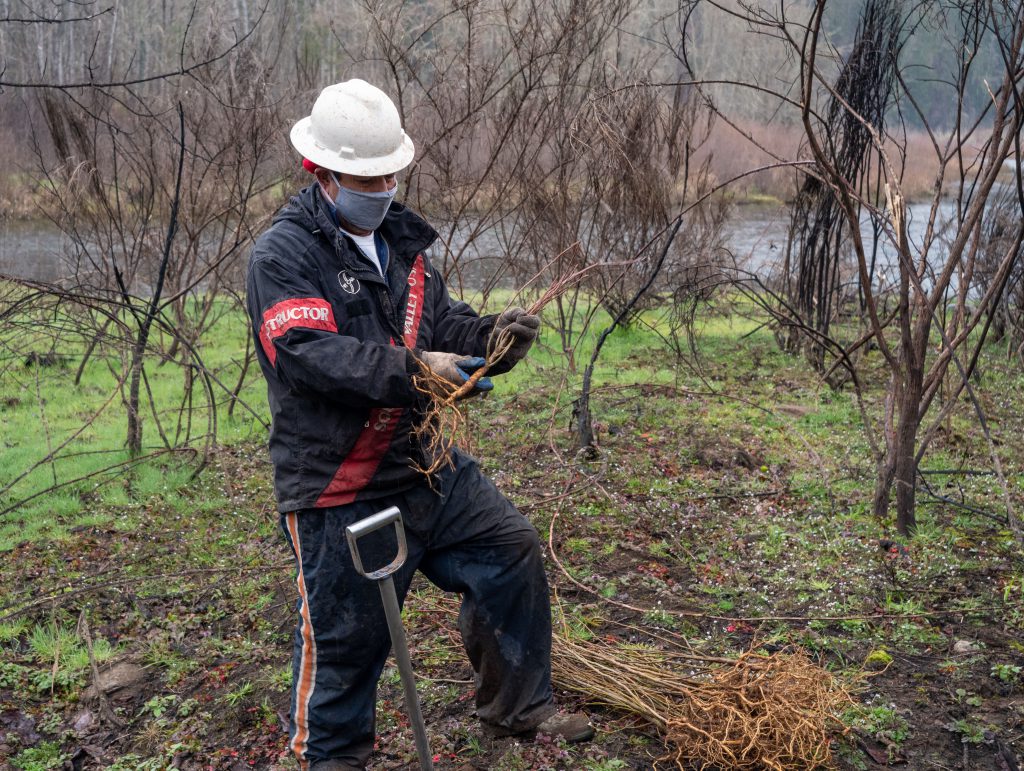
Since the September wildfires, the Clackamas River Basin Council has taken an active role in restoration efforts. We are working with the Clackamas Soil and Water Conservation District, Molalla River Watch, and Oregon Watershed Enhancement Board to help landowners who were impacted by the Riverside Fire. We are working with the North Santiam Watershed Council and other organizations to restore areas damaged in the Lionshead and Beachie Creek Fires. And we called upon you, our generous community of supporters, to fundraise to “Replant the Riverside” to restore riparian areas affected by wildfires.
Through our coordination with other organizations we have picked a few locations to plant our trees!
First, let’s review the Replant the Riverside: 10 Trees for the Clackamas campaign.

We shared the traumatic experience during the days of heavy winds, fires exploding throughout the Cascades, and smoky, apocalyptic skies. We helped each other evacuate and kept each other informed. We supported each other through some of the toughest times of our lives.
When we asked you to help heal these burn-scarred lands, you responded with the same encouragement that got us through those scary days. We promised: for every $10 donated, we would plant a tree along the river and visit these trees for 5 years to make sure they thrive.
You answered, giving $18,000, uniting around the hope of a fresh, green start.
Now that the smoke has settled, we can assess the full extent of the damage. Weíve gained an understanding of the various aid programs and insurance coverages. For Replant the Riverside, we decided to choose a place thatís being overlooked by other restoration efforts and funds.
A majority of the 138,151 acres burned by the Riverside Fire is on Forest Service land and is being restored with federal funding, so we began inspecting areas of the Clackamas River affected by the Dowty Road Fire. The Dowty Road Fire started near Highway 211 in Eagle Creek and spread southwest through rural properties and the Bonnie Lure State Recreation Area before crossing the Clackamas River to homes on the terraces above the western bank.
In talking with landowners, consulting tax lot databases, and walking through the blackened trees, we’ve found a small patch of forest along the river that was severely damaged and needs help to recover. The plot we’ve chosen is just south of Bonnie Lure State Recreation Area – and actually has no land ownership. It’s a strip of forest that was once riverbottom, so it was never designated to a government agency nor sold to a private party. A majority of our plantings will go into this unmanaged area. We are also working with private landowners affected by both the Dowty Road Fire and the Riverside Fire for additional planting sites.

CRBC Riparian Specialist Ari Sindel and Stewardship Manager Suzi Cloutier inspect the Replant the Riverside site. The Dowty Road Fire killed the vegetation, exposing the soil to be stripped away by January’s high flows. Replanting trees and shrubs here will protect the riverbank from erosion and promote the succession of native riparian forests rather than invasives.
CRBC Riparian Specialist Ari Sindel has taken the lead on our post-fire work and found our locations for Replant the Riverside.
“Although we were sure there was a need for forest recovery following the fires, identifying partners was challenging. Residents of our community with burned property had their lives upended by the fires, making it difficult to open communications with them. Many property owners qualified for other forms of assistance, and some would not meet our criteria for Replant the Riverside, which includes a maximum distance of 500 feet to the Clackamas River or its tributaries,” Ari said.
“Through building enthusiasm with landowners and consulting our watershed partners, we found the unmanaged land with severe burns and additional properties.”
Ari Sindel, CRBC Riparian Specialist
Ari put the planting plan together, ordering a mix of native trees and shrubs that thrive in riparian areas like red alder, red osier dogwoods, black cottonwood, and other species. To cover as much ground as possible, we decided to purchase ìbare-rootî seedlings from Champoeg Nursery in Aurora.
These bare-root seedlings are much cheaper than potted saplings – so we will actually be able to plant over 5,000 trees and shrubs!

“Like most of our planting projects, Replant the Riverside will employ a 3:1 shrub to tree mix. We start by planting at a very high 3-4 foot spacing density or 2,400 plants per acre,” Ari explained. “We know that, as in nature, not all individuals will survive to maturity, but our final product, many years down the road, will be a forest with a healthy canopy and understory filled with food and habitat for many forest dwellers as well as shade, habitat, and food for the nearby river dwellers.”
Planting bare-root seedlings is a technical process, so we’ve hired Diego Franco’s reforestation crew to get the area planted.
On March 5 our trees started the process of our riverside’s recovery!
“Our Council is pleased to see the overwhelming response to financially support replanting our riverside and equally enthused to see the commitment of many who are excited to take part in planting together,” CRBC Executive Director Cheryl McGinnis said.
“We have an extraordinary river loved by so many who live, work and play here. Thank you for Your extraordinary support!”
Cheryl Mcginnis, CRBC Executive Director
We know many of you were hoping to help plant these trees, and we also believe in the healing power of physically putting these young trees into the ground for oneself. That’s why we also set aside funds for potted trees. A few people have asked for our help to replant their fire-damaged properties, and we are arranging planting activities on their lands throughout the watershed.
Our first community planting opportunity is Saturday, March 20!
To volunteer, sign up on the Replant the Riverside website:
(All participants must wear masks and maintain social distance. We’ll limit the amount of volunteers to 15 people per 3 hour session to reduce coronavirus exposure.)
Thank you for your generosity, your enthusiasm, and your continued support for our watershed. These trees will help hold together the soils, protecting the river from sedimentation and landslides. Regrowing these forests is important to create shade to shield our fish from dangerous water temperatures in the summer.
By planting trees, we are empowered to heal our landscape and declare our hope for our future generations.
Thank you – we’ll see you on March 20!








